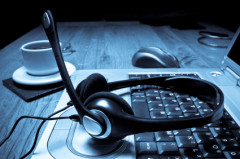By Calvin Sellers
As technology has progressed, both office culture and communication has changed dramatically.
With the constant ability to in touch with coworkers, it becomes more difficult to unplug and return to daily life.
As employees of all different ages and from all different backgrounds come together within an office setting, there are unique challenges that must be addressed in order to successfully maintain a smooth flow.
Adapting to Different Generations
One distinct change in the culture of the office is the influx of Generation Y employees into the workforce.Those born between 1946 and 1964 are Baby Boomers, and their generation is known for a strong work ethic, professional behavior, commitment to the job, and the ability to work up to higher positions. These employees value security and seniority, and plan for the future.
Those in the Gen Y generation were born between 1977 and 2002, and these individuals have high energy levels, value education over experience, dress and act more casually, and place more value on relationships and feedback from others. They desire control and independence in their jobs, and focus on balancing work and personal life.
Mobile Devices and Constant Access
Technology has drastically changed the feel of many offices around the world. Even just a few years ago, cell phones were few and far between. We now see a shift, where people of all ages have mobile devices, including smartphones and tablet computers, keeping us connected to one another at all times.
There are few excuses as to why you can abandon your cell phone, so it’s more difficult to disconnect and focus on other aspects of life.
Budget Cuts
As the economy has struggled during the past few years, many companies had to cut back in certain areas to save money and stay positive. One of the ways some have chosen to cut spending is in corporate-provided devices.
This policy, also referred to as “Bring Your Own Device,” has become more popular as businesses realize they don’t have to spend as much money on each employee’s plan. Instead, they simply repay the employee for a portion of the bill, or for the business-related usage of the device.
As employees are able to use their own devices, security is often an issue. Many companies require password protection and encryption apps to help reduce risks. If employees struggle to link the information between their smartphones, laptops, tablets, and other devices, they can use enterprise mobility management software, which makes it easier to sync all forms of technology.
Outsourcing Jobs
Another big change within office settings is the addition of outsourcing. It is often less expensive, since employees across the globe will typically work for lower pay. In fact, businesses report a 30-70 percent decrease in spending on employee salaries when utilizing this practice.
Technology continues to make outsourcing a viable solution because you have a plethora of options to stay connected with your remote workers. Many companies are implementing company Skype or Google Hangout strategies.
Others that use commercial enterprise softwares, such as Blackberry, are even seeing technology innovations that are making their offices more flexible. The evolving mobile market has caused Blackberry to shift significant focus to maximizing BBM for Android usage. This helps companies that were traditionally tied to one vendor bring on employees that use their own devices.
Traditional Office Culture Abandonment
With so many changes, some businesses have decided to abandon the traditional office setting. A combination of expensive rent costs and building maintenance fees along with a decreased need for face-to-face contact result in cutbacks by allowing employees to work from home. Benefits of this style of working include flexible working hours, elimination of commuting, and a better balance between career and home life.
Studies show that two-thirds of the employees interviewed felt a traditional office culture stifled creativity, and feels negative. Many of those Generation Y-ers are very interested in a more flexible working option, and the pressures from these employees are affecting the office environment.
There are many companies that conduct business solely online, so for many of these, an office has become obsolete.
It’s hard to predict what the future holds, but as we can look at the many changes in the past 10 years, the future definitely looks exciting.
